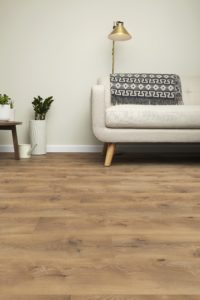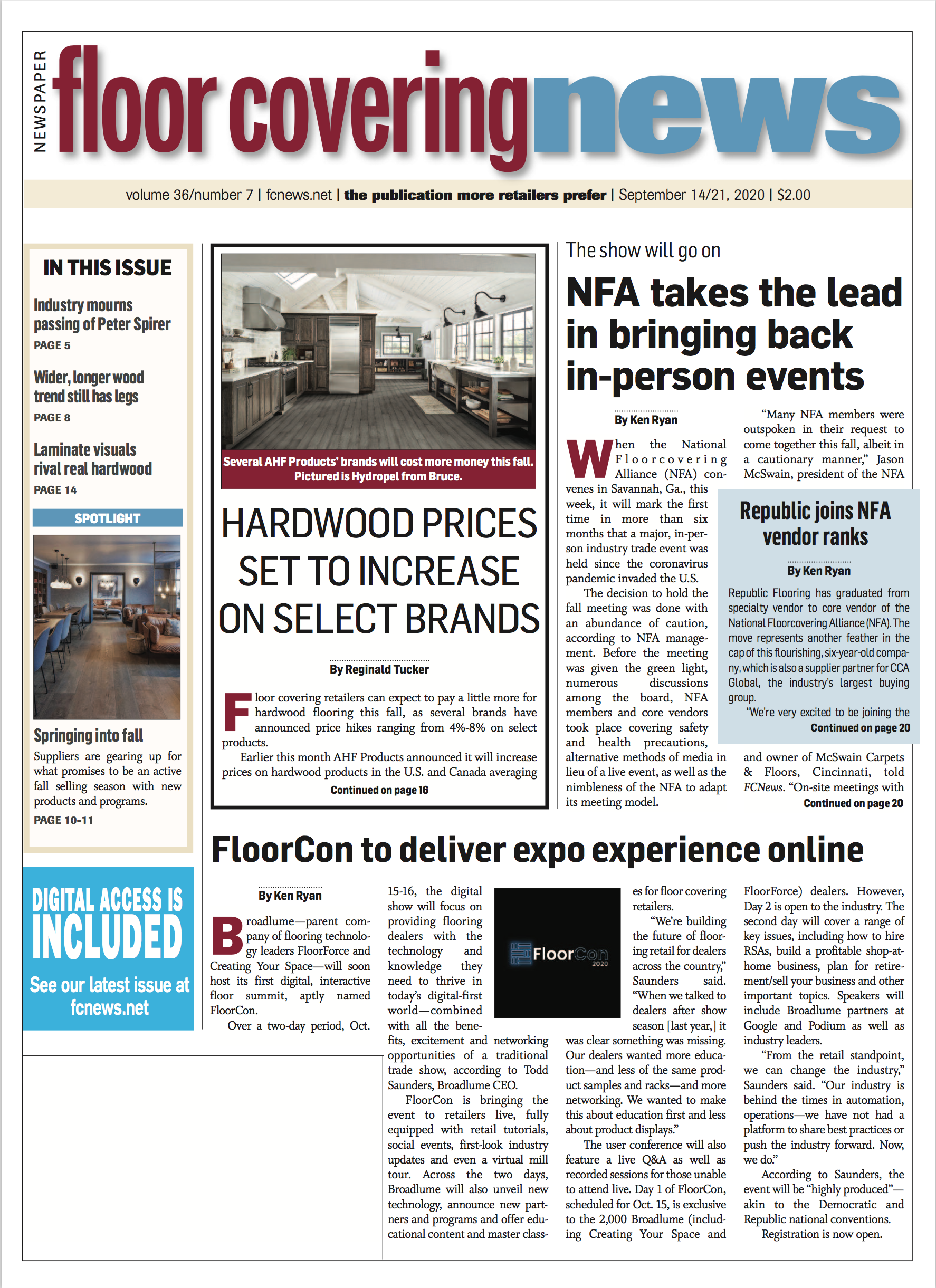By Megan Salzano

Laminate flooring, once the darling of the industry, lost some of its luster years ago, observers say. Overshadowed by competing categories that promised more in the way of design and performance, the category has struggled to maintain market share. However, the tide may be starting to turn.
Industry experts have posited that the seeming resurgence in laminate could be related to hardship currently facing its competition. Tariffs, for example, are again grabbing head- lines as the thorn in the side of the industry’s fastest growing category. It’s no secret that resilient flooring is the powerhouse of the industry. For several years running, it has stolen market share from other categories— including laminate—and remained the leading growth engine. However, that doesn’t mean it’s immune to hardship.
In November 2019, the U.S. Trade Representative (USTR) exempted much of the vinyl flooring category from the Section 301 tariffs that had greatly impacted it—the exemption was enacted in November 2019 and applied retroactively from Sept. 24, 2018 to Aug. 7, 2020. However, last month the USTR decided not to continue to include floor covering among items granted exemption, leaving many rigid LVT products exposed to the 25% tariff.
“The issue of U.S./China tariffs will go down as one of the hot topics in flooring and business in general— touching many, many industries,” said Derek Welbourn, CEO, Inhaus. “It’s certainly significant for flooring as it greatly effects the economics of flooring coming from China, including the most successful and one of the largest categories in hard surface flooring: LVT.”
While tariffs have impacted the resilient category in terms of pricing and convenience, laminate suppliers agree it isn’t really what’s put a charge in laminate sales of late. “We see that there is a general trend of laminate sales strengthening, but the tariffs are playing a very minor role in this trend,” Welbourn noted.
John Hammel, director of hardwood and laminate category management for Shaw Floors, agreed, noting, “We don’t anticipate tariffs will impact laminate sales dramatically. However, laminate will remain a great choice for those needing a durable, water-resistant floor that is a more budget-friendly option.”
While Dan Natkin, vice president of laminate and hardwood, Mannington Mills, said the reinstatement of the tariffs will only help the category as its customers seek alternatives, he agreed that it’s laminate itself that is driving its success. “Tariffs aside, we have seen a resurging interest in the category over the past 18 months as retailers recognize the multifaceted performance of today’s laminate flooring,” he explained. “Not only are most high-quality laminate flooring products at least moisture resistant, they also dramatically outperform LVT in terms of long-term performance.”
Most suppliers concur, thanks to new, rich visuals and technologically advanced performance attributes, laminate is inching its way back into the hearts and minds of consumers and storefronts of the retail community.
Suppliers also note that while tariffs and other factors play a role, the overall market strategy is focused on providing products that suit consumer interests. “While short-term dynamics such as tariffs are a reality, our strategies are built on a relentless focus on customer needs,” explained Seth Arnold, VP of residential marketing, Mohawk. “Tariffs will come and go, but customers will always be looking for high-quality and innovative flooring. That’s why we offer a balanced portfolio of globally sourced and domestically manufactured products to help our customers provide solutions to consumers.”
Some do note that heavy competition from categories such as resilient have actually been a boon to the category, motivating laminate producers to innovate. “The increased competition from LVT has actually benefited the laminate category as it has pushed the leading producers to innovate, creating even better laminate products, which were already pretty darn good,” Inhaus’ Welbourn said. “The result has been more efficient laminate production with products that offer greater innovations such as waterproof, easier installation and enhanced design. We feel the retailers can benefit by learning the new attributes of laminate, which they can pass along to their clients. It’s an interesting time to have a quality laminate flooring program.”

